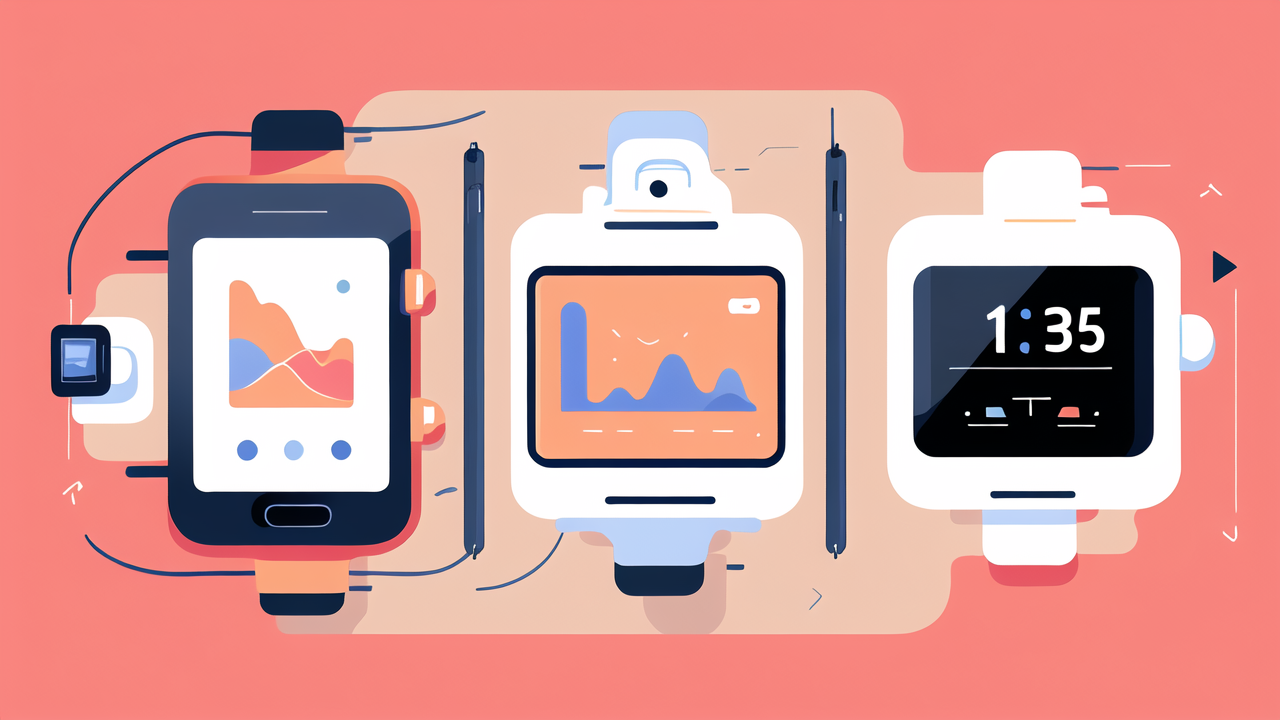Understanding the Technologies That Power Smart Bracelets
Accelerometers and Gyroscopes: The Dynamic Duo of Fitness Devices
Smart bracelets use accelerometers and gyroscopes to track movement. Accelerometers measure linear motion. They detect changes in speed and direction. Gyroscopes measure rotational movement. They track the device's orientation.

Together, these sensors provide a complete picture of your activity. They can count steps, monitor sleep, and track exercise. The data is then processed to give you useful insights.
Accuracy is key for these sensors. High-quality devices use advanced algorithms to filter out noise. This ensures that only real movements are counted. The result is a more precise record of your daily activities.
Bluetooth and Battery Life: How Connectivity Impacts User Experience
Bluetooth is the main way smart bracelets connect to your phone. It allows for quick data transfer. This means you can see your stats in real-time on your phone's screen.
But Bluetooth can drain battery life. Smart bracelets use low-energy Bluetooth to save power. This lets them run for days or weeks on a single charge.
Battery life is a key factor in user experience. Longer battery life means less charging. This makes it easier to wear the device all day and night. Some smart bracelets now use solar charging to extend battery life even further.
Wearable Design: Balancing Fashion and Functionality
Smart bracelets need to look good and work well. Designers face the challenge of fitting tech into a small, wearable package. They must consider comfort, durability, and style.
Materials play a big role in design. Silicone is common for sports models. It's flexible and sweat-resistant. Metal and leather options cater to fashion-conscious users.
Screen design is another key factor. Some bracelets use e-ink for better battery life. Others opt for bright OLED displays. The choice affects both looks and function.
The Role of Smart Bracelets in Health and Wellness
Personalized Health Tracking: Tailoring Information to the Individual
Smart bracelets offer personalized health tracking. They collect data on your activities, sleep, and heart rate. This data is then used to create a unique health profile.

The device learns your patterns over time. It can spot trends and anomalies in your health data. This allows for early detection of potential health issues.
Many smart bracelets now offer features like stress tracking. They use heart rate variability to gauge stress levels. Some even provide guided breathing exercises to help manage stress.
The Impact of Smart Devices on Daily Fitness Regimens
Smart bracelets have changed how people approach fitness. They provide constant feedback on activity levels. This motivates users to move more throughout the day.
Many devices offer workout modes for specific activities. They can track runs, swims, or bike rides. Some even provide real-time coaching during workouts.
Goal setting is a key feature of smart bracelets. Users can set daily step goals or calorie targets. The device provides reminders and celebrates when goals are met.
Emerging Trends in Wellness: Integrating AI and Machine Learning
AI and machine learning are shaping the future of smart bracelets. These technologies can analyze vast amounts of health data. They spot patterns that humans might miss.
Some devices now offer predictive health insights. They can warn of potential health issues before symptoms appear. This shifts the focus from treatment to prevention.
AI-powered personal assistants are becoming common in smart bracelets. They can offer tailored health advice based on your data. This creates a more interactive and helpful device.
Navigating the Market: Consumer Considerations for Smart Bracelets
Features vs. Price: Finding the Value Equation
When choosing a smart bracelet, consider the features you need. Basic models track steps and sleep. More advanced ones offer heart rate monitoring and GPS.

Price often reflects the number of features. But more features don't always mean better value. Think about which functions you'll actually use.
Battery life is a key factor in value. A cheaper device that needs frequent charging may be less convenient. Consider the long-term costs of ownership, not just the upfront price.
Security and Privacy: Protecting Personal Data
Smart bracelets collect sensitive health data. It's crucial to choose a device with strong security features. Look for devices that use encryption to protect your data.
Privacy policies are important. Read them carefully before buying. Understand how your data will be used and shared.
Some brands offer more control over your data than others. Look for options to delete your data or limit sharing. Remember, your health data is valuable and personal.
Compatibility and Ecosystem: Choosing Devices That Work Together
Consider how a smart bracelet fits into your tech ecosystem. Does it work with your smartphone? Can it sync with other health apps you use?
Some brands offer a range of connected devices. These can work together to give a more complete health picture. For example, a smart scale that syncs with your bracelet.
Open platforms like Google Fit or Apple Health can be helpful. They allow data from different devices to be combined. This gives you more flexibility in choosing devices.
In conclusion, smart bracelets offer powerful health tracking tools. Understanding the technology helps you make informed choices. Consider your needs, budget, and privacy concerns when choosing a device. With the right smart bracelet, you can take control of your health and fitness journey.




Leave a comment
This site is protected by hCaptcha and the hCaptcha Privacy Policy and Terms of Service apply.